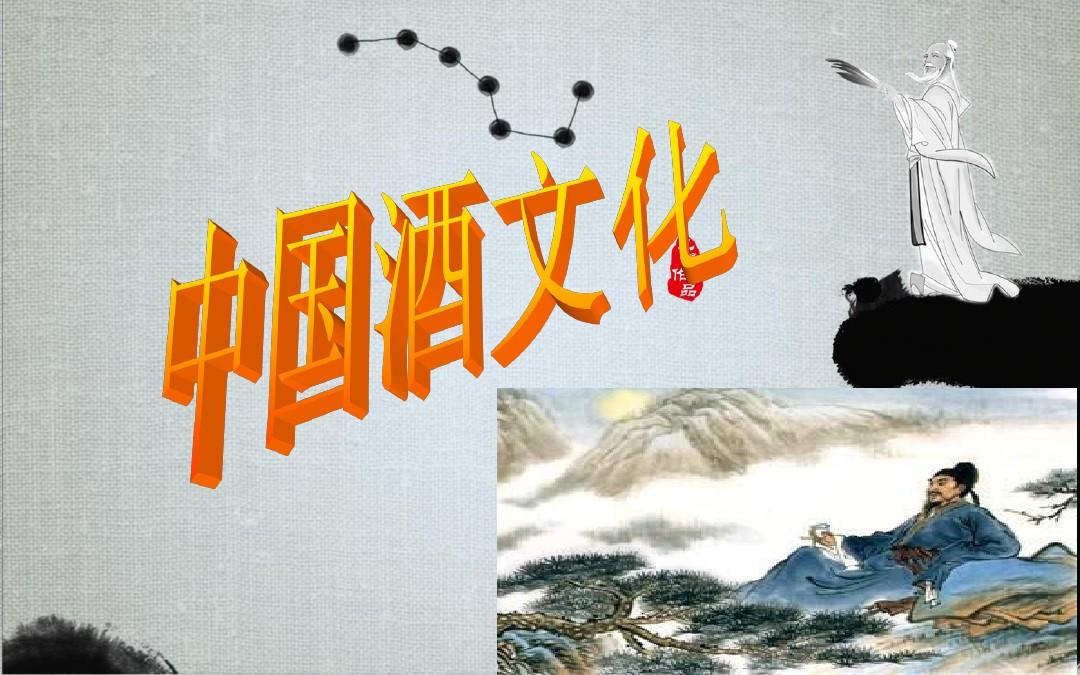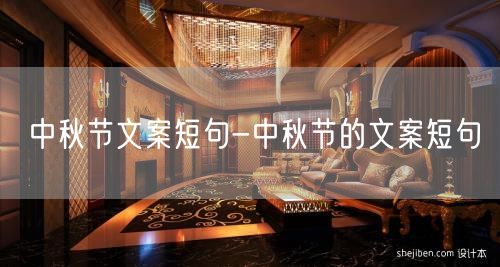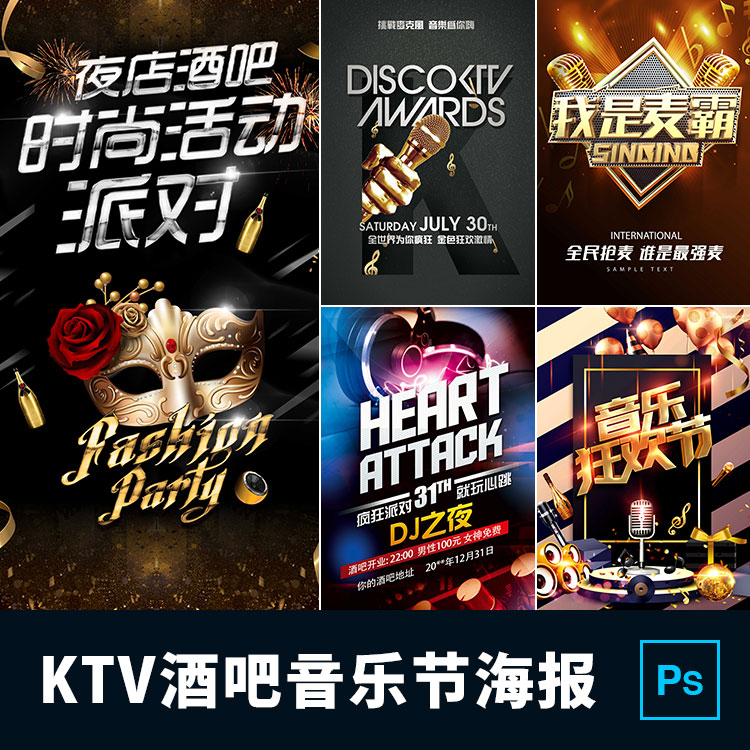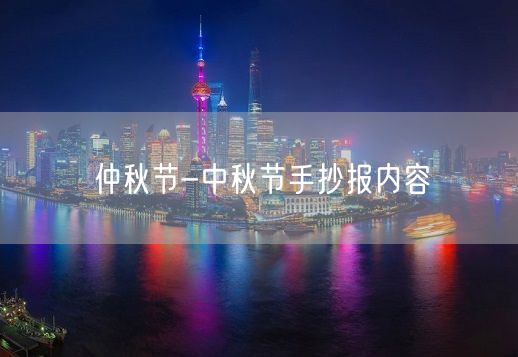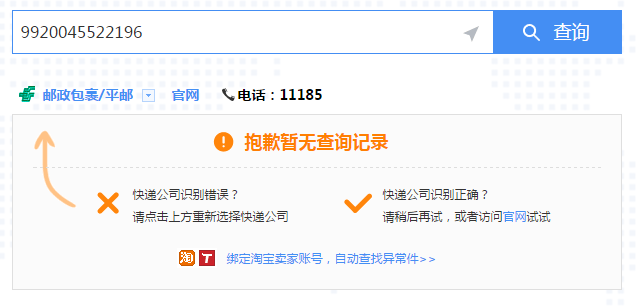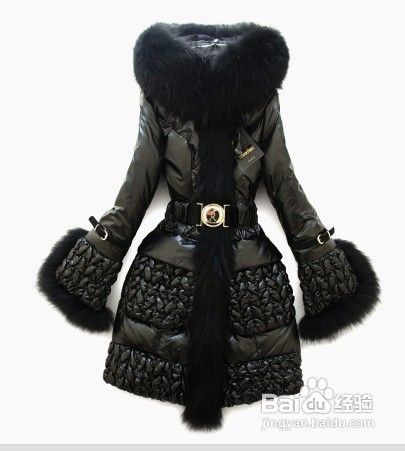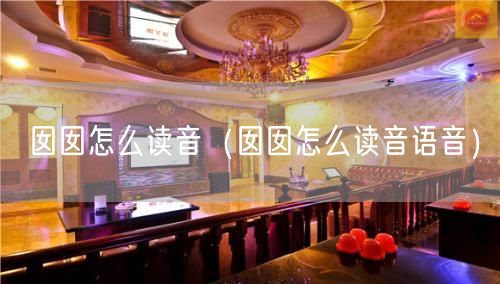中秋节的由来英语
中秋节的来历英文简短介绍如下:
according to chinese mythology, the earth once had 10 suns circling over it. one day, all 10 suns appeared together, scorching the earth with their heat. the earth was saved when a strong archer, hou yi, succeeded in shooting down 9 of the suns. yi stole the elixir of life to save the people from his tyrannical rule, but his wife, chang-e drank it. thus started the legend of the lady in the moon to whom young chinese girls would pray at the mid-autumn festival.
传说古时候,天空曾有10个太阳。一天,这10个太阳同时出现,酷热难挡。弓箭手后翌射下了其中9个太阳,拯救了地球上的生灵。他偷了长生不死药,却被妻子嫦娥偷偷喝下。此后,每年中秋月圆之时,少女们都要向月宫仙女嫦娥祈福的传说便流传开来。
in the 14th century, the eating of mooncakes at "zhong qiu jie" was given a new significance. the story goes that when zhu yuan zhang was plotting to overthrow the yuan dynasty started by the mongolians, the rebels hid their messages in the mid-autumn mooncakes. zhong qiu jie is hence also a commemoration of the overthrow of the mongolians by the han people.
Hou Yi was respected as the national hero and received an elixir of immortality as a reward for saving the people from the heat of multiple suns.
凭借将人们从多个太阳的炙烤下解救了出来,后羿被奉为英雄,并获得长生不老药以作奖励。
However, the elixir only had enough for one person, and both Chang'e and Hou Yi didn't want to leave each other.
但是这个长生不老药的量只够一个人服用,并且嫦娥和后羿也都不想离开对方。
But one day, one of Hou Yi's students tried to steal the elixir when he wasn't home.
但有一天,后羿的一个徒弟想趁他不在家的时候来偷长生不老药。
In order to protect the elixir from thieves, Chang'e took the magic elixir of immortality.
为了保护长生不老药不被偷走,嫦娥不得不服下了它。
Then she flew to the moon and became the moon goddess leaving her husband behind.
随后她就飞到了月亮上,成为了月亮仙子,从此和她的丈夫分离。
Alone on earth, Hou Yi missed his wife so much that he made an offering to the moon and tried to find the shape of Chang'e on the moon.
而孤零零地被留在大地上的后羿,由于非常想念自己的妻子,于是向月亮献上祭品,试图在月亮上找到嫦娥的身影。
To remember Chang'e, Chinese people worship the moon by eating fruit and moon-shaped desserts called mooncakes.
为了纪念嫦娥,中国人会吃水果和一种被称为“月饼”的满月形状的点心,来祭祀月亮。
This is the legend of the origin of the Midautumn Festival, which is also called "the moon festival".
这就是中秋节又被称为“月亮节”由来的传说。
中秋节的来历如何用英语介绍?
具体如下:
1、中秋节是什么?
To the Chinese, Mid-Autumn Festival means family reunion and peace. The festival is celebrated when the moon is believed to be the biggest and fullest. To the Chinese, a full moon is a symbol of prosperity, happiness, and family reunion.
对中国人来说,中秋节意味着团聚、平安。人们觉得,中秋节的月亮最大、最圆。满月象征着繁荣、幸福和团圆。
2、中国人怎么过中秋?
Many traditional and meaningful celebrations are held in most households in China, and China's neighboring countries. The main traditions and celebrations include eating mooncakes, having dinner with family, gazing at and worshipping the moon, and lighting lanterns.
大部分中国家庭以及中国的邻国都会举行许多传统的庆祝活动,主要庆祝方式包括吃月饼,吃团圆饭,赏月和点灯笼。
3、中秋节起源
Mid-Autumn Festival has a history of over 3,000 years, dating back to moon worship in the Shang Dynasty (1600–1046 BC). It’s such an important festival that many poems were written about it, stories and legends about the festival are widespread, and its origins have been guessed at and explained by generations of Chinese.
中秋节有三千多年历史,可以追溯到商代时对月亮的崇拜。因为中秋节的重要地位,历代诗人都会为中秋节写诗,关于中秋节的故事、传奇在民间广为流传,中秋节的起源也被历代中国人探究。
中秋节由来英语作文
在我们平凡的日常里,大家都不可避免地要接触到作文吧,作文是由文字组成,经过人的思想考虑,通过语言组织来表达一个主题意义的.文体。那么,怎么去写作文呢?下面是我精心整理的中秋节由来英语作文,希望对大家有所帮助!
中秋节由来英语作文 篇1
On 25th September this year, people all over China will be getting together to eat with their families, look at the moon and celebrate one of the biggest festivals in the Chinese lunar calendar.
However, the celebrations stretch far beyond the borders of China. Here in the UK events are taking place for Chinese people living here, and to teach the people of Britain more about this popular festival.
The Soho Theatre in London conducted a study which showed that Chinese Londoners don't engage much with the arts world. As a result, 'Moonwalking In China' has been created to celebrate the Mid-Autumn Festival.

This is no normal theatre production though, as it doesn't take place in the theatre. Theatre professionals and volunteers from the local community will take audiences around the streets of Soho on a magical lantern-lit walk through the landmarks and backstreets of Chinatown.
They tell the story of three generations of Chinese Londoners who all cross paths one night in Chinatown. Rabbits, karaoke and a woman who lives on the moon all feature prominently.
It's the Soho Theatre's first site-specific production and looks to be a unique way of marking the famous Chinese festival.
And the celebrations don't stop there! In early October the British Museum is actually opening late for a special free Mid-Autumn Festival event. There will be Chinese musical performances, a guess-the-mooncake-flavour game and you can learn how to perform a fan dance.
You can also try your hand at a variety of other traditional Chinese arts and crafts, as well as learning Mandarin and learning more about the history of China.
The Chinese population in the UK is quite large, so no doubt there will be events happening not only in the capital, but all around the country.
However you are celebrating, we hope you have fun. Happy mid-Autumn festival!
中秋节由来英语作文 篇2
The phrase "Mid Autumn Festival" was first seen in Zhou li. In the early Tang Dynasty, the mid autumn festival became a fixed festival. "New Tang Chi fifth music volume fifteen five" load "in spring and autumn Shidian in Wenxuan Wang, Wu King", and "Kaiyuan nineteen years, beginning the Tai Gong temple is father, to leave Zhang Liang with. In the Spring Festival and Mid Autumn Festival, the ceremony of offering sacrifices to animals and music is like writing". The popularity of the mid autumn festival began in the Song Dynasty, and it became famous in the Ming and Qing Dynasties. It became one of the major festivals in china. Every year on the 15th day of the eighth month of the Chinese lunar calendar, is the traditional mid autumn festival. This is the mid autumn of the year, so it is called mid autumn festival.
In the Chinese lunar calendar, a year is divided into four seasons, each season is divided into three parts Meng, and the Mid Autumn Festival is also known as the mid autumn season. Fifteen the moon of August than in other months more round full moon, the more bright, so they are called "Yuexi", "August festival". This night, people look up to the sky, such as jade like the bright moon, naturally will look forward to family reunion. Far away from home, but also to rely on their hometown and loved ones missing. Therefore, the Mid Autumn Festival is also called "reunion festival"".
In order to inherit the national culture and strengthen the national cohesion, the Mid Autumn Festival has been listed as the national legal holiday by the State Council since 2008. The state attaches great importance to the protection of intangible cultural heritage. In May 20, 2006, the festival was included in the first batch of national intangible cultural heritage sites approved by the state council.
In ancient times, the Chinese people had the custom of "autumn, evening, evening and month". On the eve of the worship of god. To Zhou Dai, every mid autumn night will be held cold and sacrifice month. Large incense table, put the moon cake, watermelon, apples, red dates, plums, grapes and other offerings, cakes and watermelon is definitely not small. Watermelon is cut into lotus shape. In the moonlight, the gods on the moon, red candle high fuel, the whole family in order to worship the moon, then headed housewife moon cake. The cutting man will count in advance how many people there are in the family, and those who are at home and out of town must be counted together.
From ancient Qi salt, pious worship during childhood, grow up, with superior character into the palace, but was not patronize. In August fifteen the moon, the son of heaven to see her in the moonlight, feeling that her beauty is outstanding, after she was queen, mid autumn worship to. Change mid beauty, so willing to worship the girl, "looks like moon, as the moon".
In the Tang Dynasty, the Mid-Autumn Festival and the Moon Festival were quite popular. In the capital. Fifteen August night, a lot of people, both rich and poor, old and young, all must wear adult clothes, say desire for religious worship, pray that God bless the moon. The Southern Song Dynasty, folk to moon cake gift, take the meaning of reunion. In some places there are grass dragon dance, pagodas, etc.. Since the Ming and Qing Dynasties, the custom of Mid Autumn Festival is more prevalent; many places formed a burning incense, tree Mid Autumn Festival, point tower lights, lantern, walk the moon, dance and other special customs.
Today, the custom of playing on the moon is far from the old. But a banquet to celebrate the very popular, people ask the month to the wine, to celebrate the wonderfull life, or friends healthy and happy, and the family "partings". The Mid Autumn Festival has a lot of customs and forms, but all of them are full of love for life and yearning for a better life.
中秋节由来英语作文 篇3
The Mid-Autumn Festival , also known as the Moon Festival, is a popular harvest festival celebrated by Chinese people and Vietnamese people (even though they celebrate it differently), dating back over 3,000 years to moon worship in China's Shang Dynasty .It was first called Zhongqiu Jie in Zhou Dynasty . In Malaysia and Singapore , it is also sometimes referred to as the Lantern Festival or Mooncake Festival.
Legend about Mid-Autumn Festival
It is said that the earth once had ten suns circling over it, each taking turn to illuminate the earth. One day, however, all ten suns appeared together, scorching the earth with their heat. Houyi ,a strong and tyrannical archer, saved the earth by shooting down nine of the suns. He eventually became King, but grew to become a despot .
One day, Houyi stole the elixir from a goddess. However, his beautiful wife, Chang'e, drank it so as to save the people from her husband’s tyrannical rule. After drinking it, she found herself floating, and flew to the moon. Houyi loved his divinely beautiful wife so much, he did not shoot down the moon. Chang'e flew to the moon grabbing a rabbit to keep her company. So the Chinese say that if you look up at the moon to this day you can sometimes see a rabbit making moon cakes.
The Mid-Autumn Festival is held on the 15th day of the eighth month in the Chinese calendar, which is usually around mid or late September in the Gregorian calendar. It is a date that parallels the autumn and spring equinoxes of the solar calendar, when the moon is supposedly at its fullest and roundest. The traditional food of this festival is the mooncake, of which there are many different varieties.
Customs in Mid-Autumn Festival
The Mid-Autumn Festival is one of the two most important holidays in Chinese calendar, the other being the Chinese New Year, and is a legal holiday in several countries. Farmers celebrate the end of the summer harvest season on this day. Traditionally, on Mid-Autumn Day, Chinese family members and friends will get together to admire the bright mid-autumn harvest moon, and eat moon cakes and pomeloes together. Accompanying the celebration, there are additional cultural or regional customs, such as eating moon cakes outside under the moon, carrying brightly lit lanterns, lighting lanterns on towers, floating sky lanterns, burning incense in reverence to deities including Chang'e, planting Mid-Autumn trees , collecting dandelion leaves and distributing them evenly among family members and Fire Dragon Dances .
中秋节由来英语作文 篇4
The joyous Mid-Autumn Festival was celebrated on the fifteenth day of the eighth moon, around the time of the autumn equinox(秋分). Many referred to it simply as the "Fifteenth of the Eighth Moon".
This day was also considered as a harvest festival since fruits, vegetables and grain had been harvested by this time and food was abundant. Food offerings were placed on an altar set up in the courtyard. Apples, pears, peaches, grapes, pomegranates(石榴), melons, oranges and pomelos(柚子) might be seen. Special foods for the festival included moon cakes, cooked taro(芋头)and water caltrope(菱角), a type of water chestnut resembling black buffalo horns. Some people insisted that cooked taro be included because at the time of creation, taro was the first food discovered at night in the moonlight. Of all these foods, it could not be omitted from the Mid-Autumn Festival.
The round moon cakes, measuring about three inches in diameter and one and a half inches in thickness, resembled Western fruitcakes in taste and consistency. These cakes were made with melon seeds(西瓜子), lotus seeds(莲籽), almonds(杏仁), minced meats, bean paste, orange peels and lard(猪油). A golden yolk(蛋黄) from a salted duck egg was placed at the center of each cake, and the golden brown crust was decorated with symbols of the festival. Traditionally, thirteen moon cakes were piled in a pyramid to symbolize the thirteen moons of a "complete year," that is, twelve moons plus one intercalary(闰月的) moon.
In the Western calendar, the day of the festival usually occurred sometime between the second week of September and the second week of October.
中秋节由来英语作文 篇5
The Mid-Autumn Festival is a traditional festivity for both the Han and minority nationalities. The custom of worshipping the moon can be traced back as far as the ancient Xia and Shang Dynasties (2000 B.C.-1066 B.C.). In the Zhou Dynasty(1066 B.C.-221 B.C.), people hold ceremonies to greet winter and worship the moon whenever the Mid-Autumn Festival sets in. It becomes very prevalent in the Tang Dynasty(618-907 A.D.) that people enjoy and worship the full moon. In the Southern Song Dynasty (1127-1279 A.D.), however, people send round moon cakes to their relatives as gifts in expression of their best wishes of family reunion. When it becomes dark, they look up at the full silver moon or go sightseeing on lakes to celebrate the festival. Since the Ming (1368-1644 A.D. ) and Qing Dynasties (1644-1911A.D.), the custom of Mid-Autumn Festival celebration becomes unprecedented popular. Together with the celebration there appear some special customs in different parts of the country, such as burning incense(熏香), planting Mid-Autumn trees, lighting lanterns on towers and fire dragon dances. However, the custom of playing under the moon is not so popular as it used to be nowadays, but it is not less popular to enjoy the bright silver moon. Whenever the festival sets in, people will look up at the full silver moon, drinking wine to celebrate their happy life or thinking of their relatives and friends far from home, and extending all of their best wishes to them.
There is this story about the moon-cake. during the Yuan dynasty (A.D. 1280-1368) China was ruled by the Mongolian people. Leaders from the preceding Sung dynasty (A.D. 960-1280) were unhappy at submitting to the foreign rule, and set how to coordinate the rebellion without being discovered. The leaders of the rebellion, knowing that the Moon Festival was drawing near, ordered the making of special cakes. Backed into each moon cake was a message with the outline of the attack. On the night of the Moon Festival, the rebels successfully attached and overthrew the government. Today, moon cakes are eaten to commemorate this legend and was called the Moon Cake.
For generations, moon cakes have been made with sweet fillings of nuts, mashed red beans, lotus-seed paste or Chinese dates, wrapped in a pastry. Sometimes a cooked egg yolk can be found in the middle of the rich tasting dessert. People compare moon cakes to the plum pudding and fruit cakes which are served in the English holiday seasons.
中秋节的来历英语
1.最早的时候,中秋节是为了庆祝丰收而举行的。后来,嫦娥在月亮宫殿中的美丽仙女被赋予了神秘的色彩。
"Zhong Qiu Jie" probably began as a harvest festival. The festival was later given a mythological flavour with legends of Chang-E, the beautiful lady in the moon.
2.To the Chinese, Mid-Autumn Festival means family reunion and peace. The festival is celebrated when the moon is believed to be the biggest and fullest. To the Chinese, a full moon is a symbol of prosperity, happiness, and family reunion.
中秋节是中国人团聚、平安的象征。人们认为,中秋的月亮是最大、最圆的。满月象征着繁荣,幸福和团圆。
